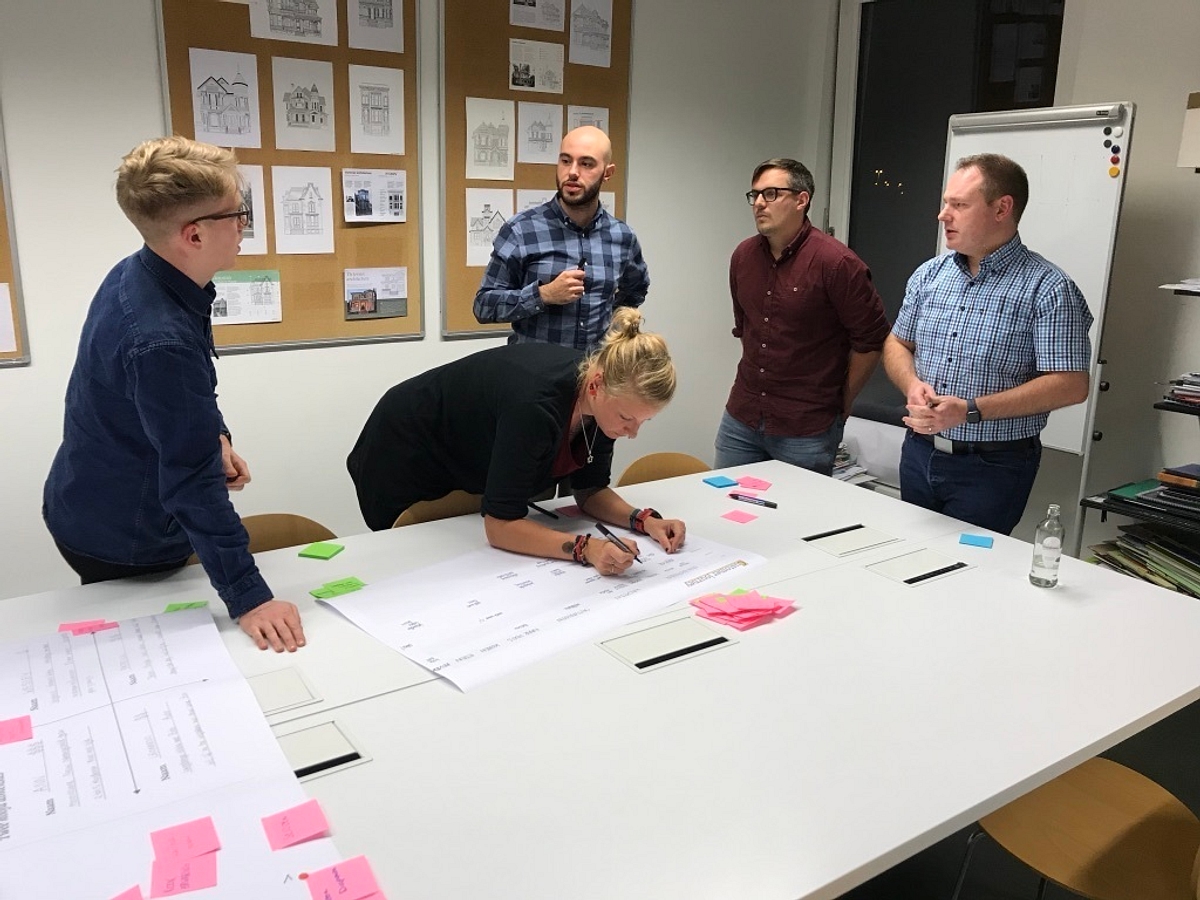
How we train the Experience Architects of tomorrow
Just 15 years ago, nobody could’ve imagined we’d be connected at all times through computers that fit our pocket. We live in an evolving world, driven by technological advancements.
At Leap Forward, we connect people and businesses through digital products and services. More specifically, we help clients by redefining the requirements of these products, so that they stay relevant for years to come. From service designer to developer, there are a lot of different roles and responsibilities necessary to turn those needs into a futureproof and fully-functional product.
The glue that holds a multidisciplinary team like this together is someone who knows about research, design, and business and communicates with different teams and stakeholders. It's the Experience Architect. With tons of in-house experience and knowledge, we felt it was our responsibility to team up with other outstanding digital companies and Artevelde Hogeschool to create a course tailored to that specific profile.
Why the Experience Architect?
Building, maintaining and updating a digital product or service requires different roles and responsibilities. First of all, you need people who identify and analyse the core issues via research and who can conceptualise the possible solutions through ideation. Second, creating an online product asks for people to visualise these concepts into wireframes with a robust user experience and then give it an awesome paint job! Third, there are profiles that turn research into actionable plans and strategies through backlogs, roadmaps, and business canvasses.
The Leap Forward-team consists of all these professionals. But in reality, having this type of in-house knowledge readily available is rare. There's room for improvement as companies are looking for people who can pick up after we, as a digital agency, have done our work. Helping our clients in the best way possible is our number one priority, which is why we teamed up with other respected agencies and Artevelde Hogeschool to offer this postgraduate degree.
What can students expect?
Together with colleagues Duke & Grace and In The Pocket, we gathered all our expertise into an educational story where each lesson continues upon the previous one. The talented people at Artevelde Hogeschool help us guide the students and provide them with a personal development plan. They take care of the practicals, follow along in the lessons, bring their own expertise and provide incredibly tasty sandwiches.
The four modules in the curriculum are "Research", "Ideation", "The MVP", and the “Go-to-market-strategy."
Instead of homework, students get to prepare each lesson to apply the “flipped classroom”-principle. Teachers assign chapters and learning materials to read, so you come to class prepared.
Every lesson is split into theoretical and practical exercises, where you learn the techniques that will be used in your own case. That case revolves around a specific topic you want to tackle. You’re in a team with other students and the teachers ensure your work is relevant to your company’s interest and will allow you to work on it on a day-to-day basis at work, just by doing your job. At the end of each module, every group presents what they’ve learned so far by implementing the techniques in their case.
In the final module, we implement everything we’ve learned so far during a sprint, coming up with a solution to a specific problem. There’s a strong focus on team effort. Every lesson is one part of the sprint, where we start with a design challenge and work our way through research, ideation, prototypes, and concepts straight into pitching the idea in front of a panel of judges, active in the respective fields. To help everyone succeed and graduate, we help every student in the best way possible! To celebrate, there’s a big BBQ when the classes are over.
Gallery
First-hand experience
How our colleague Tycho experienced his first year
“As a multidisciplinary digital product designer, I’ve done research, created concepts, prototyped, did visual design, worked on branding and design systems, and I even dabbled in front-end development,” he says. “But even with this luggage, I learned service design techniques I hadn’t used yet. I learned how to apply them, lead the workshops that come with service design, and to be a facilitator, which was a key part of the first module.
The ideation module let us come up with a hundred ideas, based on the learnings gathered in the research phase. But I was most in my element when I had to create a minimal viable product (MVP). That was also when I got to help my peers, who weren’t as proficient in using Figma and its prototyping functionalities. The go-to-market module taught us to connect with our users’ problems and tie our solutions to an effective business plan.
In the final sprint, we put all the pieces together with a target audience in mind and design challenge at hand: “How can we help teenagers educate themselves at home due to the Coronavirus." My team landed on a digital product concept that integrates with Smartschool, and provides a digital classroom to make the experience more social.
In the end, we created a storyboard and a prototype in Figma and tested our ideas with the target audience. It was fascinating to realise how quickly a raw idea can turn into something worth testing."
Gallery
Text block
Attending lessons after a day of work requires a bit of effort, but it was worth it! I learned a lot and met great people on those weekly Tuesday meetups. My skills are sharpened and I even added a few new ones to my toolbox. If you’d like to learn more about the postgraduate program, don’t hesitate to reach out. We’re looking forward to welcoming a new batch of students next year.
Don't want to miss out on this opportunity? Click here for more information.


